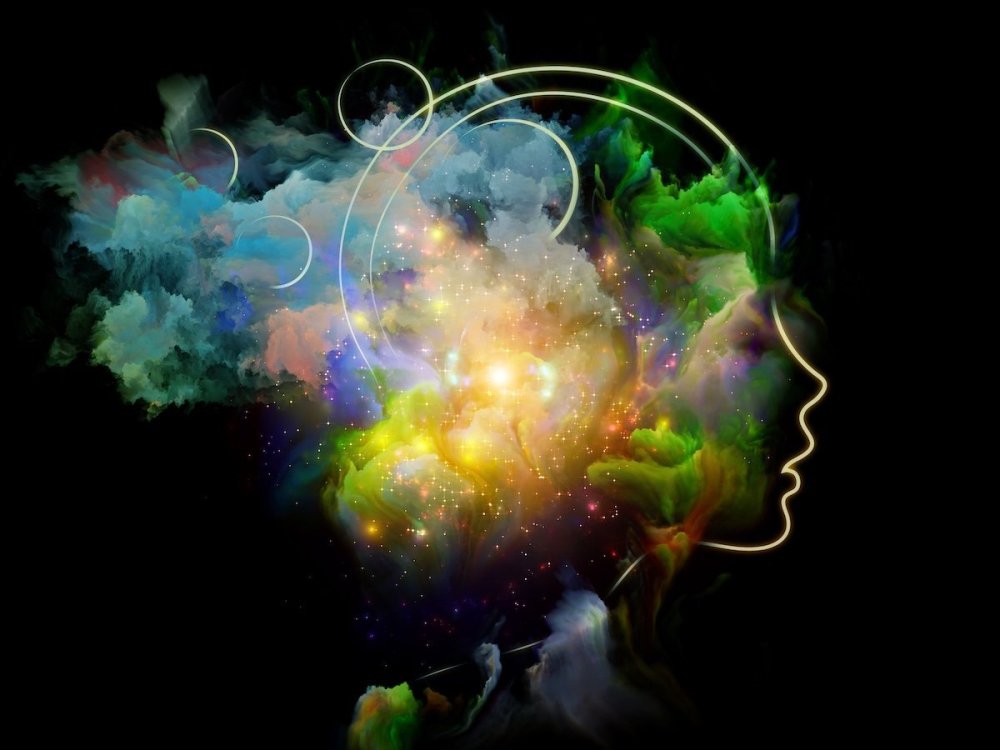The growing scientific interest and use of psychedelics in treating mental health issues is testament to their possible benefits. Psychologist Stanislava Puač J. explains why psychedelic integration via a coach or therapist should be an essential part of the journey.
The use of psychedelic substances is one of those topics that few people are neutral about. Depending on the culture, context, and personal upbringing, these substances are either seen as gateways to deeper insight – or as a doorway to doom.
The proponents argue that psychedelic experiences bring forth insights, emotional breakthroughs, or even profound spiritual awakenings. However, speaking from the perspective of psychology and psychiatry, the actual self-development work may only begin after the experience. This is where proper psychedelic integration comes in – a process that helps individuals weave newfound awareness into the fabric of their everyday lives.
While psychedelic integration is gaining visibility in mental health, it is essential to acknowledge that the use of psychedelic substances remains legally restricted in many countries. In discussing the use of psychedelics we are not promoting or encouraging the use of such substances. Instead, we are investigating the integration of psychedelic experiences for those who have already had them — whether through legal therapeutic programs, clinical trials, or culturally sanctioned practices.
Let’s dive into the world of post-journey transformation and explore the intricacies of making sense of altered states of consciousness.
What Is Psychedelic Integration?
Psychedelic integration is the process of understanding and assimilating the insights, emotions, and revelations that emerge during a psychedelic journey. It’s about finding a place for those extraordinary experiences in your life and your perception of the world.

Psychedelic integration involves assimilating the insights that emerge from a psychedelic journey
Additionally, it is more than just reflection. When you undergo psychedelic integration therapy, you embark on a guided journey of:
- processing your emotions
- making behavioural changes
- using your insights for therapeutic growth
In recent years, psychedelic integration therapy has gained recognition as an essential part of the healing journey. Even more so, psychedelic-assisted psychotherapy (“professionally supervised use of ketamine, MDMA, psilocybin, LSD, and ibogaine as part of elaborated psychotherapy programs”) is considered a paradigm shift that might assist diagnostics and therapy of even “treatment-resistant” conditions. Psychedelic integration therapy is an essential aspect of these approaches.
“Psychedelic integration is the process of understanding and assimilating the insights, emotions, and revelations that emerge during a psychedelic journey.”
However, the idea of psychedelic integration is not new. For longer than we remember, indigenous traditions and shamanic cultures have emphasized post-ceremony rituals. The lessons believed to be received during altered states were placed within a broader life narrative with the help of a shaman (which, in the modern Western world, would be a psychedelic integration coach). In many Amazonian cultures, for instance, ayahuasca ceremonies are followed by periods of rest, reflection, and special regimes.
RELATED:
- What is a Shaman and What Does a Shaman Do?
- What is Soul Loss and Retrieval? Healing Through a Shamanic Lens
- Exploring Shamanic Healing: What to Expect
Today, a psychedelic integration coach and therapist draws from similar principles. The integration process itself can take many forms, depending on the nature of the experience and the individual’s specific needs. This brings us to the different types of psychedelic integration.
Types of Psychedelic Integration
The process of psychedelic integration should always be highly individualized. Yet, it usually incorporates three main dimensions: physical/somatic, psycho-spiritual, and emotional:
1. Physical or Somatic Integration
The body often carries residue from psychedelic experiences. Some people find that the body “remembers” more than the mind, especially when they are new to psychedelic experiences.
For this reason, somatic (or physical) integrations are essential. Bodywork, yoga, breathwork, or movement practices can all be used to release tension or even traumatic memories brought forth during the psychedelic journey.
Another part of the mix is paying attention to sleep, nutrition, and rest.
2. Psycho-Spiritual Integration
Many psychedelic experiences come with ego dissolution, unity consciousness, or encounters with archetypal imagery. Such powerful and extraordinary incidents require sensitive integration, as they can be disorienting as much as they are illuminating.
Psychedelic integration therapy may use frameworks such as transpersonal psychology or mindfulness practices to explore these states. The goal is for the client to develop curiosity rather than fear.

A coach or therapist should be used with psychedelic integration
And in spiritual integration, a psychedelic integration coach helps the individual respond to questions like: “What does this mean for how I live?” or “How does this experience reshape my beliefs?”
3. Emotional Integration
One of the most commonly reported effects of psychedelic journeys is the surfacing of buried emotions. Intense grief, rage, love, or vulnerability tend to burst out, and it becomes vital to work on their integration.
“One of the most commonly reported effects of psychedelic journeys is the surfacing of buried emotions. Intense grief, rage, love, or vulnerability tend to burst out, and it becomes vital to work on their integration.”
Therefore, the emotional dimension of psychedelic integration is about creating space to process these feelings gently and safely. A psychedelic integration coach guides the client through naming and exploring their feelings, identifying patterns, and maintaining a sense of grounding.
Some of the techniques used are journaling or creative expression.
Why Is Psychedelic Integration Important?
Psychedelic integration is vital because it can mean the difference between a fragmented, overwhelming experience and one that becomes a gateway to profound growth.
As authors who give practical guidelines on psychedelic integration for mental health specialists argue, psychedelic experiences might be translated as “mind-manifesting experiences”. In other words, the term “refers to the phenomenon of pulling the unconscious material to the conscious surface, allowing it to be accessed and processed”.

Psilocybin, found in mushrooms, is a popular psychedelic
Therefore, given the depth and intensity of what may emerge – unconscious material appearing in symbolic, emotional, or sensory form – psychedelic integration becomes essential. It is what transforms the experience into a healing one:
- It helps insights take root and transform one’s psyche.
- Psychedelic experience therapy helps work through emotional overwhelm, unsettling visions, or unresolved questions.
- A psychedelic integration coach or therapist provides compassion and structure so that a psychedelic journey can become restorative.
- It is a vital factor in extending the insights into everyday behaviour, relationships, and a sense of purpose.
Without all of this, a psychedelic journey might remain a disconnected and confusing memory.
How Long Does Psychedelic Integration Take?
Once again, as with any growth process, there is no fixed timeline for psychedelic integration. It can unfold over weeks, months, or even years. Therefore, you’d do best not to be set on any specific “deadline”.
- You may require ongoing work with a coach or therapist to integrate the insights you received fully.
- A single session of psychedelic therapy may start a ripple effect that will put everything in its place over time.
-
Or, you may find clarity within days as you experience an “A-ha!” moment explaining the meaning behind your experience.
These differences are why you need the help of a psychedelic integration coach. They will help set a pace and guide you through the process. Initially, you may need to focus on grounding techniques and establishing emotional safety. Later, you may be ready for more in-depth work, such as identity shifts, making life changes, or exploring spiritual meaning.
“Psychedelic integration is vital because it can mean the difference between a fragmented, overwhelming experience and one that becomes a gateway to profound growth.”
Similar to mainstream psychotherapy (especially depth psychotherapies), not everything you will go through during the psychedelic integration will feel comfortable. Integrating these new insights and emotions might require you to grieve old patterns, let go of narratives, or make difficult decisions. Be self-compassionate and take as much time as you need.
Where Can I Find a Psychedelic Integration Coach?
As psychedelic-assisted therapies begin to enter the mainstream mental health field in some parts of the world, more professionals are receiving training in guiding the integration process.
RELATED:
- What is the Peyote Cactus and Is it Legal?
- Microdosing 101: A Modern Phenomenon Rooted in Ancient Times
- What Science Says About Microdosing Magic Mushrooms
Given the delicacy of the process, when seeking a psychedelic integration coach or therapist, look for individuals with a license in mental health, trauma-informed care, or spiritual counselling. The person serving as a guide on this path must have training in ethical support practices because integration often brings up vulnerable material that needs to be held safely and ethically.
Principal qualities to look for include:
- Certification in relevant coaching or therapeutic fields
- Familiarity with psychoactive substances and their psychological effects
- A non-judgmental attitude towards non-ordinary experiences
- A grounding presence that helps you feel safe and supported
In addition to these qualities, it would be ideal for the coach or therapist to view integration as a process of co-creation and cooperation. They should be the guide, but not dictate the process, as psychedelic insights are non-linear—and your post-experience growth should be the same.
Takeaway: Psychedelic Integration
Psychedelic integration is the vital piece in the transformation puzzle. Think about it not as a luxury or a bonus part of the psychedelic experience. It is a necessary continuation of the journey.
Traditionally, shamans were the guides. Nowadays, more and more mental health professionals are becoming interested and trained in supporting psychedelic integration. However, from ancient times to the present, the message remains consistent: the experience is just the beginning. Actual change occurs when you walk the path after the vision fades. ●
Images: shutterstock/agsandrew, shutterstock/Rumka vodki, shutterstock/Rooom27
happiness.com | The fine art of being: learn, practise, share
Are you a happiness.com member? Sign up for free to enjoy:
■ our happiness magazine with practical life tips
■ sharing and supporting others in our happiness forum
Written by Stanislava Puač J.
 Stanislava Puač J. is a psychologist, life coach, and writer with over 15 years of experience exploring how our inner world shapes our interactions, health, and sense of self. Her work blends research, real-life practice, and a holistic view of well-being – spanning emotional regulation, communication, and mindfulness.
Stanislava Puač J. is a psychologist, life coach, and writer with over 15 years of experience exploring how our inner world shapes our interactions, health, and sense of self. Her work blends research, real-life practice, and a holistic view of well-being – spanning emotional regulation, communication, and mindfulness.


Join the conversation
You are posting as a guest. If you have an account, sign in now to post with your account.
There are no comments to display.